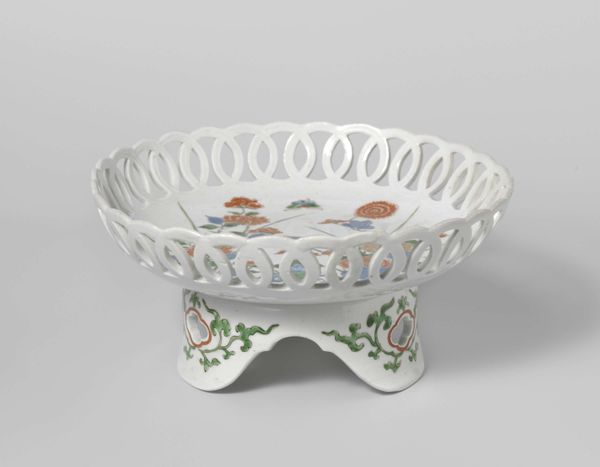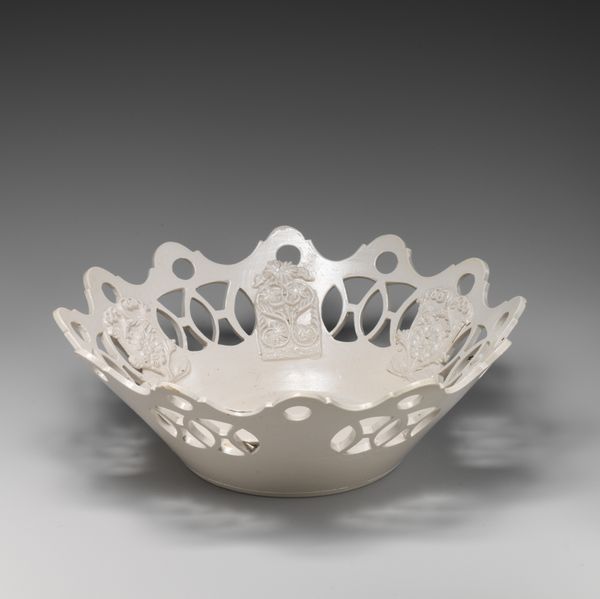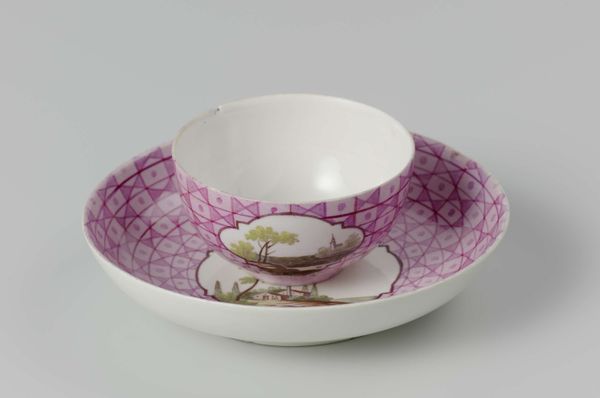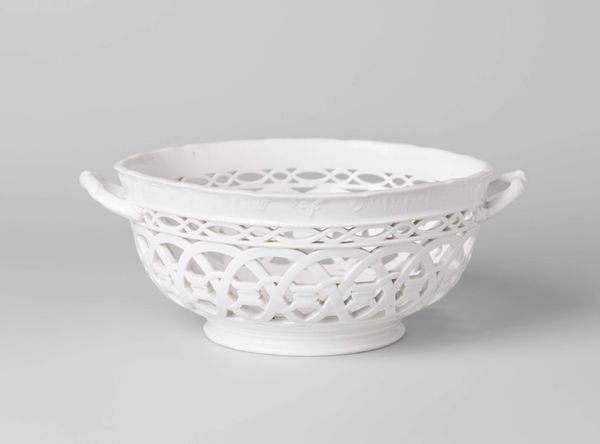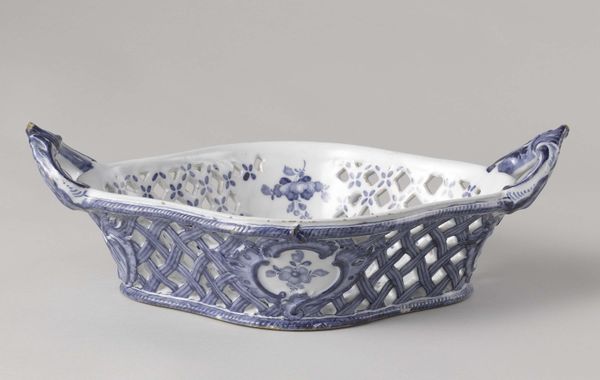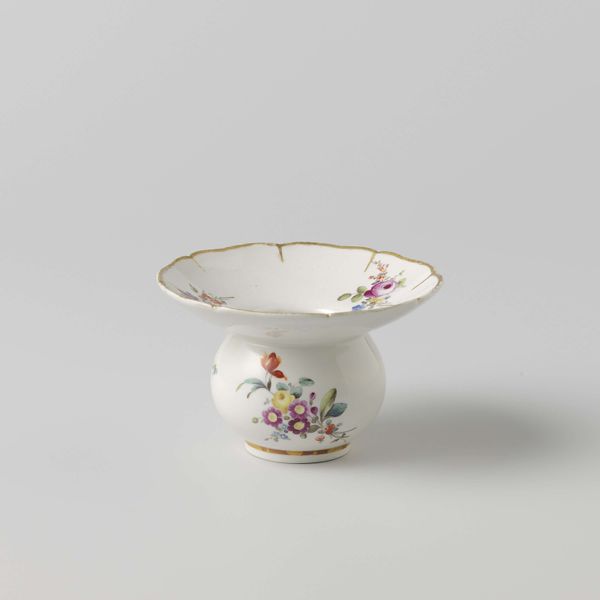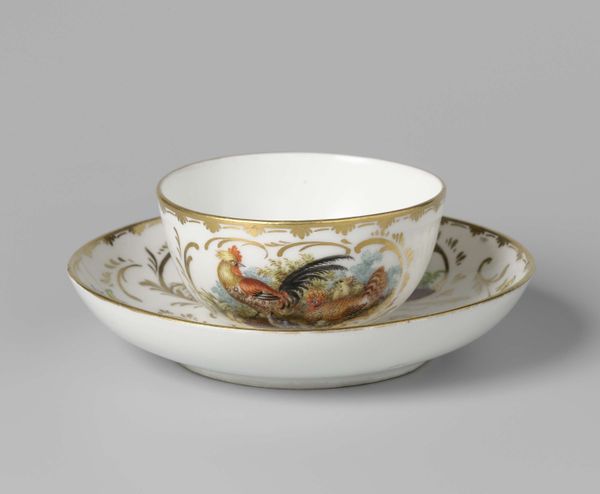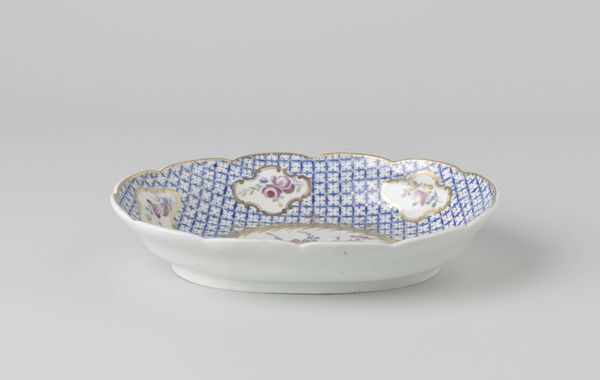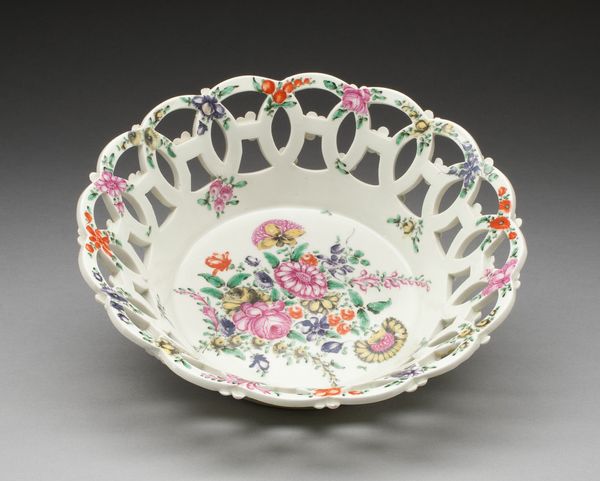
ceramic, porcelain, earthenware
#
baroque
#
asian-art
#
ceramic
#
porcelain
#
earthenware
#
ceramic
#
decorative-art
Dimensions: height 11 cm, diameter 24 cm, diameter 15 cm
Copyright: Rijks Museum: Open Domain
Curator: This charming ceramic piece, a "Saucer-dish on tripod with flowering plants near rocks," dates back to around 1700-1724. It is held in the collection of the Rijksmuseum and was created by an anonymous artist. What's your initial take on it? Editor: Well, my immediate impression is of restrained opulence. The delicate openwork rim and elevated tripod base create an air of preciousness, but the painted floral details introduce a grounded, naturalistic element. Curator: Absolutely. Objects like this are so evocative of the trade routes and cultural exchange that were shaping early modern Europe. Pieces of porcelain arriving from Asia became status symbols, embodying refinement and global interconnectedness. The craze led to local European manufacturers producing Delftware as well as other variations. Editor: You know, that porcelain body speaks to so much. For one, flowers symbolize various, sometimes contradictory, things, like beauty and ephemerality. Do you think this composition points towards any particularly salient readings of these emblems, given their social context? Curator: That’s a great point. Given its production timeframe and market, these were pieces made for the domestic lives of affluent families and were definitely a source of cultural and social display. But such art was meant to serve domestic functions too; these flower paintings may speak towards ideas of homemaking. Editor: The detail of the pierced rim is just masterful. It elevates the piece. Curator: It certainly does, showcasing both technical skill and stylistic trends. I would also say that a floral and rocaille style that followed speaks about elite notions of "taste." Editor: These pieces demonstrate such incredible artisanal virtuosity. In that case, the role of craft, labor and specialized artistry come into play in complex economic systems that fueled these commercial interactions. Curator: Precisely! And ultimately, its symbolic weight—and the aesthetic pleasures it offers us today—derives from those historical layers. Editor: I’ll be contemplating it anew on the way out now. Thanks for giving us that added detail!
Comments
No comments
Be the first to comment and join the conversation on the ultimate creative platform.
